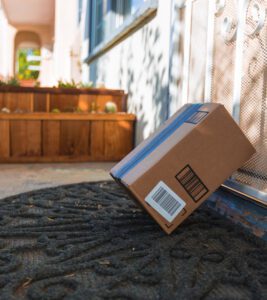
The ability to easily make returns plays a huge part in where online shoppers decide to spend their ecommerce dollars, according to a new report from UPS.
Globally, 36 percent of online shoppers have returned an item in the last three months, and 73 percent said the returns process affected whether they would shop again with a retailer, according to the 2019 Pulse of the Online Shopper report.
The study, conducted in early 2019 by PwC, surveyed more than 18,000 shoppers in 15 countries and regions. Fifty-six percent of online shoppers track their deliveries, with Americans being the most active trackers.
About two out of three shoppers (63 percent) ship ecommerce returns directly back to sellers overall. A delay in getting a refund (25 percent) was the biggest returns issue cited by shoppers, followed by having to pay for a return (24 percent) or a delay in receiving an exchange or replacement item (21 percent).
The biggest element in a positive returns experience was free return shipping, cited by 42 percent of respondents. Next was a hassle free returns policy (28 percent), automatic refunds to credit or debit cards (24 percent) and easy to print returns labels (21 percent).
Not surprisingly, 90 percent of online shoppers do research before making a purchase. The most important factors to research were price (79 percent), product details (43 percent) and delivery costs (43 percent).
You May Also Enjoy:
- Amazon Assistant and the Value of Ecommerce Data
- Using B2B Ecommerce to Boost Global Reach
- Ecommerce Portal Helps United Rentals Improve Customer Experience
Ninety-five percent expect to see all shipping fees and taxes totaled before they complete the purchase. To cut down on those fees, many online shoppers are drawn to rewards programs. About one in five surveyed (19 percent) have more than five loyalty memberships, citing free shipping, members-only discounts and rewards points as their primary reasons for joining.
While shoppers do want convenience, they don’t want to pay for it. Respondents liked next-day deliveries, but will consider incentives for slower shipping. Millennials were the most likely to opt for accelerated shipping, while online shoppers in general showed a low propensity for paying for shipping. Adding items to the cart (36 percent), choosing the slowest transit time (32 percent) and searching for a promo code (32 percent) were among the actions shoppers took to avoid shipping fees.
Nearly six percent of online shoppers have used a marketplace, according to the report; 36 percent of consumers and nearly half of businesses said they intend to purchase more on marketplaces in the next year. Globally, 48 percent of consumers impulse buy on marketplaces.
The most used marketplaces in the Americas are Amazon, Walmart/Jet, eBay, Best Buy and Mercado Libre. Amazon matters tremendously for consumers, even if shoppers don’t decide to buy there: more than half of shoppers with Amazon Prime (56 percent) start their research there, as do 40 percent of shoppers generally. Prime membership is linked to higher average orders as well: the average order cost of all online purchases in a three month period was $207 for Amazon Prime users; $142 for shoppers who buy from Amazon but don’t have Prime; and $131 for those who do not shop on Amazon.
Small businesses are also drawn to marketplaces for low prices (73 percent); shopping efficiencies such as one-click purchases or saved payment details (42 percent); and better return policies (43 percent).
‘The growth of digital marketplaces is extraordinary,” notes Kevin Warren, CMO of UPS. “As recent as the mid-1990s, ecommerce barely existed. Today, it’s a $2.9 trillion industry, growing 24 percent annually. “
 Network
Network

